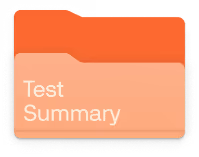
Key Benefits
- Understand your insulin level to uncover hidden insulin resistance early.
- Spot early metabolic imbalance before glucose or HbA1c show prediabetes.
- Guide targeted nutrition, activity, and weight strategies to improve insulin sensitivity.
- Flag cardiometabolic risk tied to high insulin, including unhealthy cholesterol patterns.
- Protect fertility by identifying insulin resistance common in PCOS and ovulatory issues.
- Support pregnancy planning by assessing risk for gestational diabetes.
- Track progress by trending insulin alongside glucose to gauge therapy response.
- Interpret results best when fasting with glucose, HbA1c, and HOMA-IR for insulin resistance.
What is Cardio IQ Insulin?
Cardio IQ Insulin is a blood test that measures the amount of insulin in your bloodstream. Insulin is a short protein hormone (peptide) made by the beta cells of the pancreas (islets of Langerhans). It is built from a precursor (proinsulin) and released when blood sugar rises after a meal, aided by signals from the gut (incretins).
Insulin’s central job is to move fuel into cells and coordinate storage. It tells muscle and fat to take up glucose, helps the liver and muscle store it as glycogen, suppresses the liver’s output of new glucose, and shifts the body toward building and storing (lipogenesis, protein synthesis) while slowing fat breakdown (antilipolysis). A blood insulin value reflects how strongly the pancreas is signaling to control blood sugar and manage energy use. Because insulin shapes many metabolic pathways, its level also speaks to the body’s broader metabolic state (glucose homeostasis, hepatic glucose production, lipid handling) that ties everyday energy balance to cardiometabolic health.
Why is Cardio IQ Insulin important?
Insulin is the body’s fuel-partitioning hormone, directing glucose into cells, storing energy in fat and liver, and signaling blood vessels, kidneys, ovaries/testes, and the brain. Cardio IQ Insulin measures fasting insulin to show how hard the pancreas must work to keep glucose normal—an early window into insulin sensitivity and cardiometabolic risk, often changing years before glucose or A1c.
In general, fasting insulin is reported within a broad reference range; for most adults, metabolic “sweet spot” tends to sit toward the low-normal end, reflecting efficient insulin signaling without overproduction.
When insulin is low and glucose is normal, it usually reflects high insulin sensitivity or a prolonged fasting state—cells take up glucose readily, energy is steady, and fat storage signals are quiet. When insulin is very low with high glucose, it suggests inadequate production (autoimmune diabetes, pancreatic injury), with thirst, frequent urination, weight loss, and possible ketones. In children and teens, very low insulin with hyperglycemia warrants urgent evaluation. During pregnancy, unusually low insulin with rising glucose is atypical and suggests beta-cell strain.
Higher fasting insulin indicates insulin resistance: the pancreas is compensating. This drives liver fat formation, higher triglycerides, lower HDL, higher blood pressure, endothelial dysfunction, and inflammation. People may notice post-meal sleepiness, cravings, abdominal weight gain, or acanthosis nigricans. In women it can underlie polycystic ovary syndrome; in men, low testosterone is more common. Puberty raises insulin needs; persistently high values signal future diabetes, fatty liver, and cardiovascular disease. In pregnancy, markedly elevated insulin with rising glucose aligns with gestational diabetes physiology.
Big picture: fasting insulin integrates with glucose, A1c, C‑peptide, lipids, liver enzymes, and blood pressure to map metabolic health. Keeping insulin demand low-normal signals resilient mitochondria, healthier vessels, and reduced long-term cardiometabolic risk.
What Insights Will I Get?
Cardio IQ Insulin measures the amount of insulin circulating in your blood, usually in the fasting state. It reflects how much work your pancreas (beta-cells) must do to keep glucose stable and is a window into insulin sensitivity. Because insulin coordinates energy use, lipid handling, vascular tone, inflammation, reproductive hormone balance, and brain signaling, fasting insulin is a core marker of cardiometabolic health and future cardiovascular risk.
Low values usually reflect efficient insulin sensitivity or prolonged fasting, meaning the body needs little insulin to keep glucose in range. In children and lean, active adults, lower-normal levels are common. If insulin is low despite high glucose, it suggests impaired beta‑cell output (insulin deficiency), as in autoimmune diabetes or pancreatic disease. In pregnancy, unusually low insulin with hyperglycemia is concerning.
Being in range suggests balanced insulin secretion and clearance, steady glucose delivery to tissues, and lower cardiometabolic stress. Many experts view the lower end of the fasting reference interval as a marker of good insulin sensitivity when glucose is normal and there are no hypoglycemic symptoms.
High values usually reflect insulin resistance—the tissues respond poorly, so the pancreas compensates by secreting more. This hyperinsulinemia drives atherogenic lipids, endothelial dysfunction, higher blood pressure, visceral fat storage, fatty liver, and pro‑inflammatory signaling. In women it often accompanies ovulatory dysfunction or polycystic ovary syndrome. Levels tend to run higher in puberty and with aging. Persistently high insulin, even with normal glucose, indicates elevated cardiometabolic risk.
Notes: Fasting status, recent meals, acute stress/illness, and vigorous exercise influence levels. Pregnancy and puberty raise insulin needs. Kidney or liver impairment can elevate insulin by reducing clearance. Corticosteroids, some antipsychotics, insulin secretagogues, and incretin therapies alter results. Assay methods vary; interpret against the lab’s reference interval.






.avif)



.svg)





.svg)


.svg)


.svg)

.avif)
.svg)










.avif)
.avif)
.avif)


.avif)
.png)


